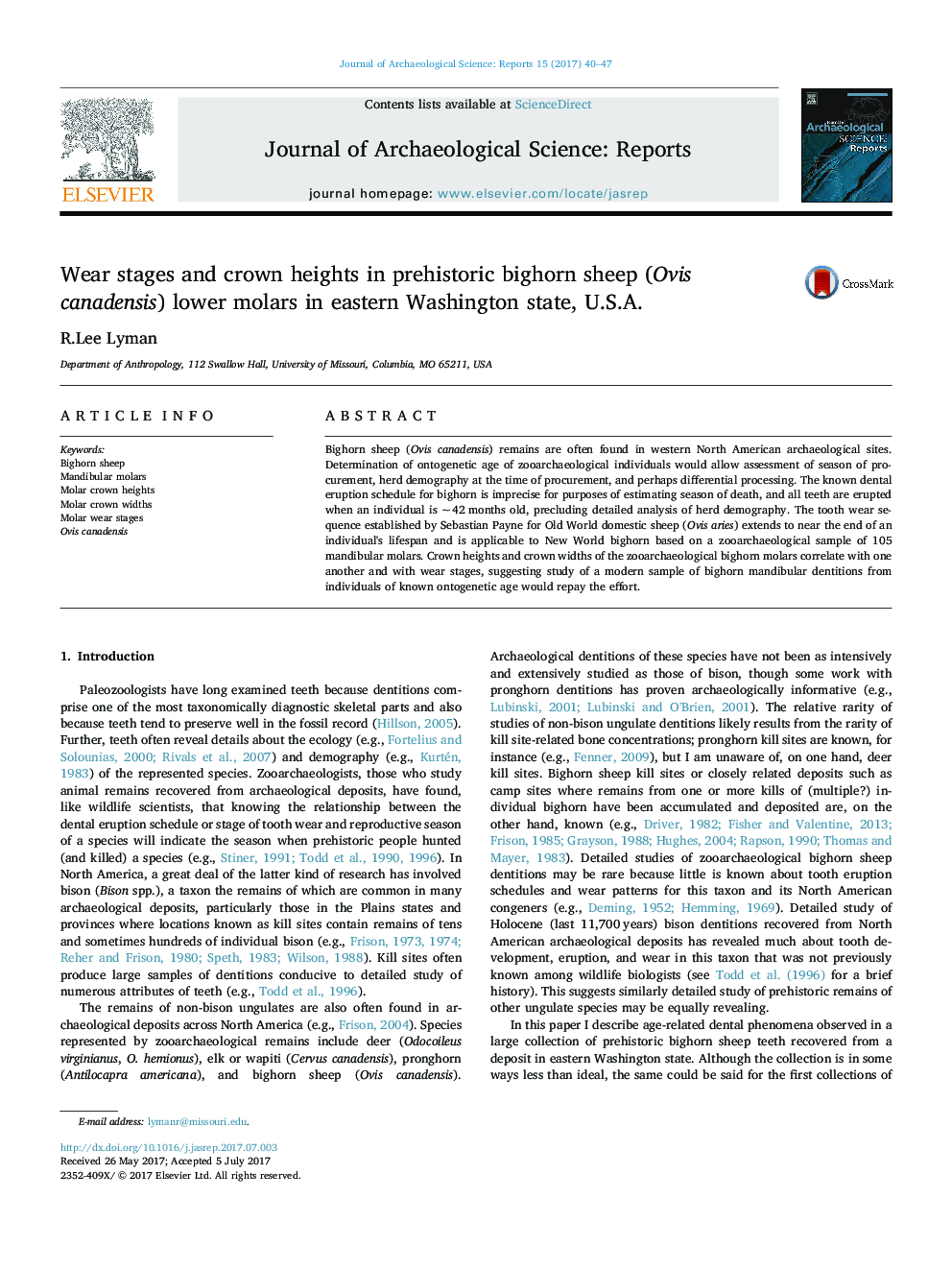| Article ID | Journal | Published Year | Pages | File Type |
|---|---|---|---|---|
| 5112272 | Journal of Archaeological Science: Reports | 2017 | 8 Pages |
Abstract
Bighorn sheep (Ovis canadensis) remains are often found in western North American archaeological sites. Determination of ontogenetic age of zooarchaeological individuals would allow assessment of season of procurement, herd demography at the time of procurement, and perhaps differential processing. The known dental eruption schedule for bighorn is imprecise for purposes of estimating season of death, and all teeth are erupted when an individual is ~Â 42Â months old, precluding detailed analysis of herd demography. The tooth wear sequence established by Sebastian Payne for Old World domestic sheep (Ovis aries) extends to near the end of an individual's lifespan and is applicable to New World bighorn based on a zooarchaeological sample of 105 mandibular molars. Crown heights and crown widths of the zooarchaeological bighorn molars correlate with one another and with wear stages, suggesting study of a modern sample of bighorn mandibular dentitions from individuals of known ontogenetic age would repay the effort.
Related Topics
Social Sciences and Humanities
Arts and Humanities
History
Authors
R.Lee Lyman,
